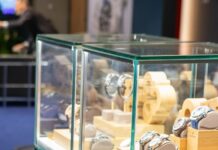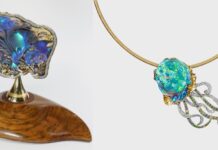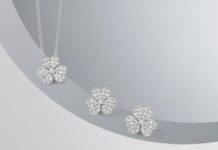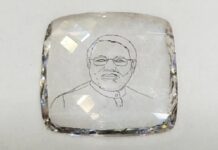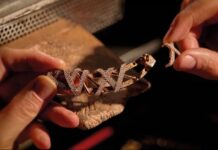Scientists at Princeton University called on GIA’s expertise in gemmological research and the analysis of optical centres to evaluate how to use the unique properties of diamonds to create a highly secure communications network.
The research, published in the July 6, 2018 issue of Science magazine, examined how colour centres created by replacing two carbon atoms with one silicon atom in the crystal lattice of a synthetic diamond could be used to store and retransmit information in a quantum communications network that would allow for the transmission of information between physically separated processors. Using instrumentation and techniques developed at GIA, GIA Research Associate Lorne Loudin, one of several co-authors of the article, helped to accurately determine the distribution of the colour centres in the diamonds examined for the research, which guided materials engineering efforts to create the desired colours.
“Accurately mapping the colour centres, which occur at low concentrations in uncontrolled samples, was an important aspect of our research,” said lead researcher Nathalie de Leon, assistant professor of electrical engineering at Princeton. “GIA’s expertise and specialised equipment for mapping such defects was crucial to the project.”
“GIA’s decades of scientific inquiry into the fundamental characteristics of natural and synthetic diamonds gave us a unique ability to collaborate with Princeton and Professor de Leon,” said Dr. Wuyi Wang, GIA vice president of research and development. “This is another example of how gemmological research can be applied to different areas of scientific inquiry.”
GIA has conducted and published research on diamonds, coloured stones and pearls for more than 60 years. G. Robert Crowningshield, a GIA researcher for more than 50 years, published the first scientific observations of the earliest synthetic diamonds in Gems & Gemology, GIA’s quarterly journal, in 1971. In 2016, GIA research scientist Evan Smith published path-breaking research, also in Science magazine, on diamonds of exceptional size and quality that revealed clues about Earth’s geology.
News Source : jewellerynet.com
Disclaimer: This information has been collected through secondary research and TJM Media Pvt Ltd. is not responsible for any errors in the same.







